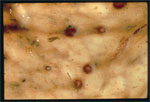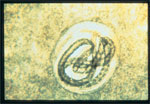NFED Equine Health
Worming is an area of horse care that you can take control of to help protect the health of your horse. However, worming can be confusing. For a start there are now many different brands of wormers available, although many actually contain the same active ingredient. To help guide you through the worming puzzle is this simple guide on when to worm your horse and with what active ingredient. |
 |
ALL YEAR ROUND:
Roundworms: Routine roundworm control once the preserve of the grazing
season should now be undertaken all year-round even if your horse is only
at grass for short periods of time during the winter months. This is due
to climate changes, with milder and wetter winters meaning that horses
are at risk of accidentally eating infection larvae late into the year.
The most common roundworm, and most common and harmful parasite to infect horses today is the small redworm.
- Treatment: Dosing interval for roundworms is based on active ingredient of wormer i.e. moxidectin every 13 weeks (e.g. EQUEST or EQUEST PRAMOX), ivermectin every 8-10 weeks, pyrantel every 4-8 weeks, fenbendazole every 6-8 weeks or mebendazole every 6 weeks. When planning your routine roundworm worm control it is important not to use wormers against which there is known resistance. With resistance in horses to benzimidazole - fenbendazole/mebendazole (Fisher 1992, Chandler 2000), pyrantel (Coles 1999) and ivermectin (Stoneham 2006) based wormers you may want to seek guidance from your vet prior to their use. Suggested treatment time: All year round.
Dependent on active ingredient used for routine roundworm control additional treatments may need to be added at certain times of the year if not covered as part of routine treatment.
AUTUMN:
Tapeworms: Exposure to tapeworm is greater during periods of prolonged
grazing; as such treatment should be undertaken in the autumn following
summer turnout. Treatment for tapeworm is recommended every 6-months (Proudman
1995).
- Treatment: Single dose of praziquantel-based wormer (e.g. EQUEST PRAMOX) or double dose of pyrantel-based wormer. Suggested treatment time: September or October or November.
Encysted small redworm: Treat your horse against encysted small redworm larvae so as to reduce the burden of these life-threatening encysted larvae that have accumulated, while your horse grazes, in its gut wall.
- Treatment: Single dose of a moxidectin-based wormer (e.g. EQUEST PRAMOX or EQUEST) or 5-day course of fenbendazole-based wormer. However, with widespread small redworm resistance to fenbendazole, and with evidence that this 5-day course may actually increase the selection pressure for resistance amongst small redworm (Reinemeyer 2003) the use of fenbendazole for the control of encysted small redworm larvae is not advisable where resistance is present (Coles 2003). Suggested treatment time: November.
WINTER:
Bots: Treat your horse after the first frost when the adult flies die
off, and prior to the larvae maturing and emerging from your horse in
the spring.
- Treatment: single dose of a moxidectin (e.g. EQUEST or EQUEST PRAMOX) or ivermectin-based wormer. Suggested treatment time: November or December or January.
Encysted Small Redworm: Treat your horse in late winter against encysted small redworm hidden in the horse’s gut wall. These may emerge from your horse’s gut wall en masse in late winter/early spring. This mass emergence of encysted small redworm, known as larval cyathostominosis, is potentially fatal.
- Treatment: single dose of moxidectin-based wormer (e.g. EQUEST or EQUEST PRAMOX) or 5-day course of fenbendazole based wormer. Suggested treatment time: February.
SPRING:
Tapeworm: With treatment for tapeworm recommended every 6-months, treatment
should be repeated in the spring.
- Treatment: Single dose of praziquantel based wormer (e.g. EQUEST PRAMOX) or double dose of pyrantel-based wormer. Suggested treatment time: March or April or May.

References:
Chandler KH et al (2000) Veterinary Record 147: 661-662
Coles GC et al (1999) Veterinary Record 145: 408
Coles GC et al (2003) Veterinary Record 153: 636
Fisher MA et al. (1992) Veterinary Record 130:315-318
Proudman CJ et al (1995) Veterinary Record 137: 45-49
Reinemeyer CR et al (2003) The Journal of Applied Research in Veterinary
Medicine Vol 1. No 1. Winter 2003: 66-72
Stoneham S et al (2006) Veterinary Record 158: 572





